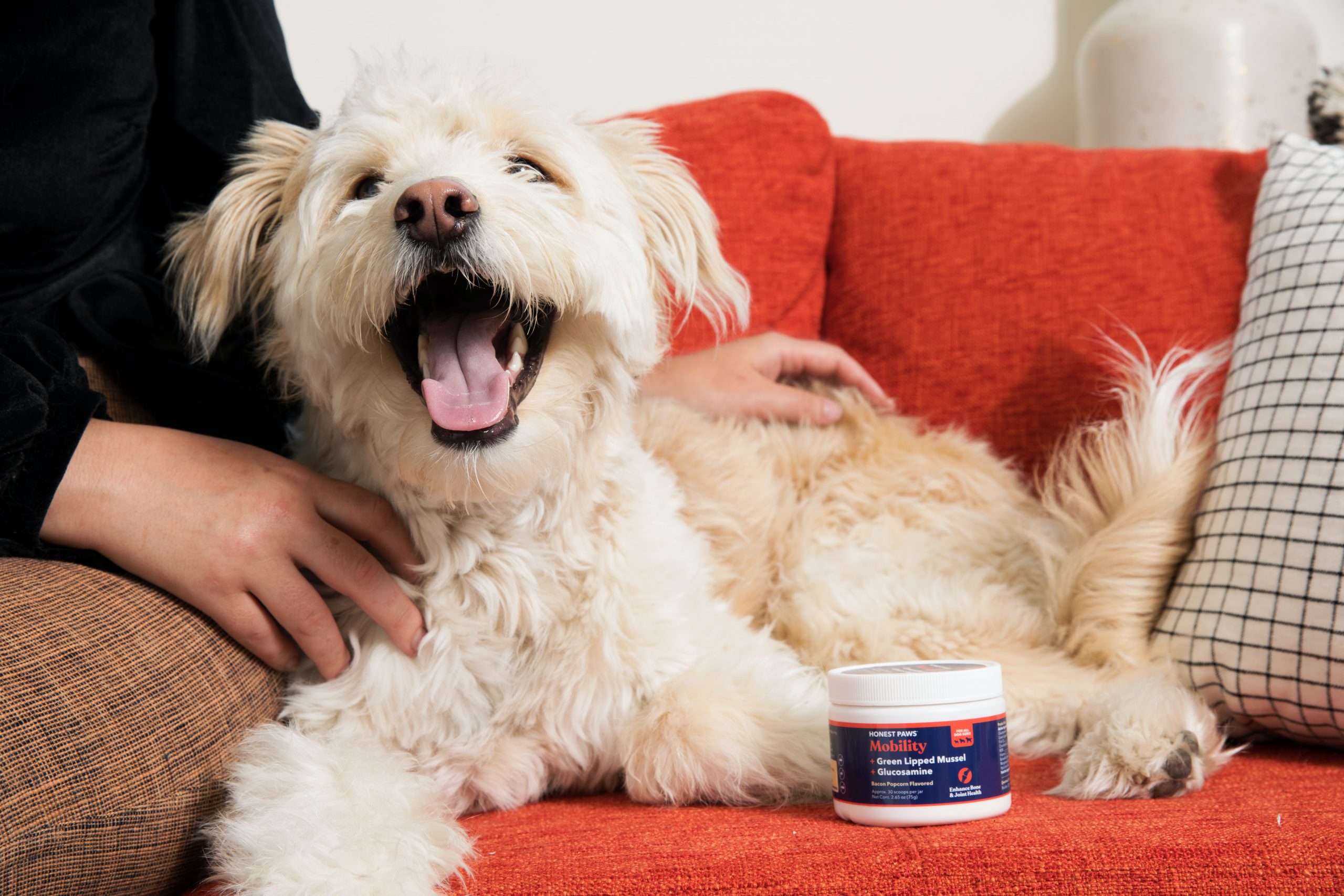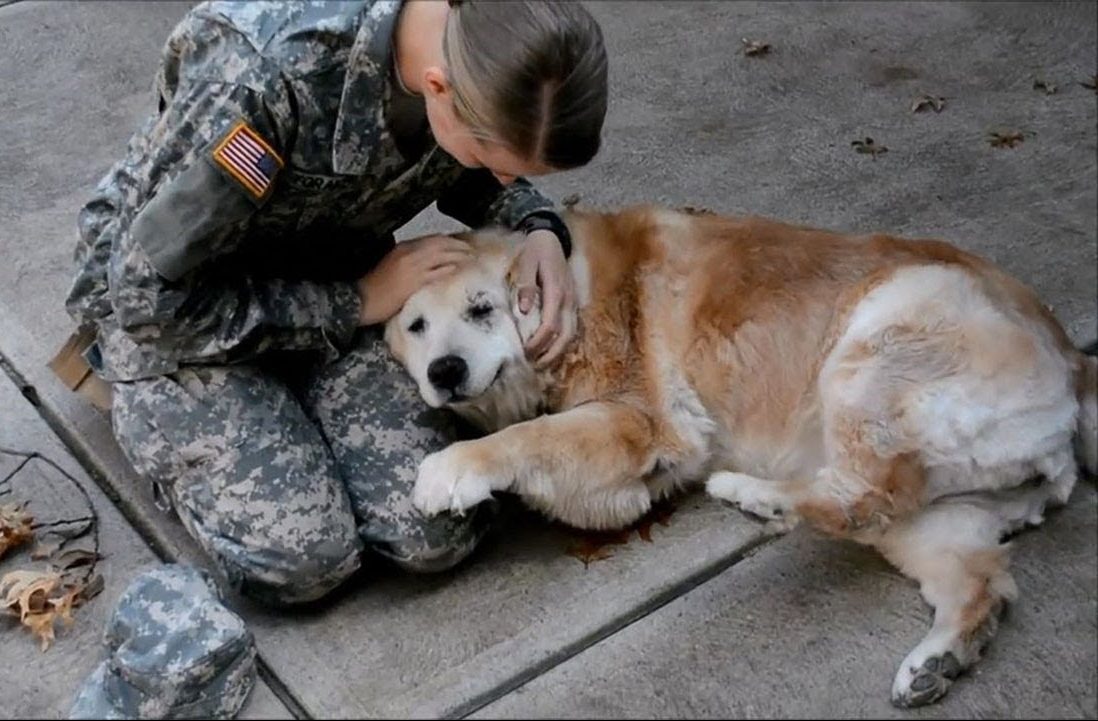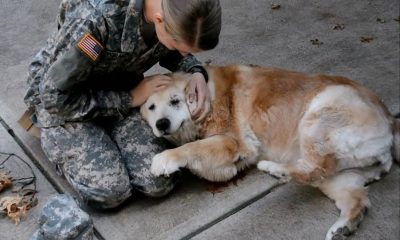Dogs
Do You Know Why Dogs Scoot and How You Can Help?

Do you have an older dog at home? If you do, you’ve probably noticed that they scoot across the floor from time to time when they pee or poop. The first time it happens, most pet owners don’t even know what they’re seeing, but once they realize what their dog is doing, they want to help them feel better. Here are several causes of this common behavior and how to deal with it.
What is Dog Scooting
Dog scooting is when a dog drags behind on the floor. It can be frustrating to see your pet suffering, but thankfully there are ways to help! As with any medical condition, it’s important that you take your pup to the vet for a proper diagnosis and treatment plan. They will likely prescribe medication to relieve pain or discomfort as well as identify underlying causes such as infection or parasites. In some cases, surgery may be required if an underlying problem is identified like an enlarged prostate gland in male dogs or an anal sac tumor in female dogs. With proper care and treatment, your pup should feel much better soon!
Reasons for Dog Scooting
Dogs scoot for a variety of reasons. Some dogs scratch at itchy skin, others are more sensitive to certain surfaces, while some may have worms or other parasites in their intestines. Whatever the reason for your dog’s scooting, there are ways to help him feel much better. The first step is finding out why he is doing it. If he has an infection, his vet can prescribe antibiotics that will clear up the problem quickly. If he has an allergy to something like pollen, you can try giving him Benadryl which will reduce his itchiness and allow him to sleep peacefully through the night without scratching himself raw.
The Quickest Solution (when all else fails)
Dogs may scoot when their anal sacs are too full of fluid. This can happen for a variety of reasons, from worms to infections to allergies. The easiest thing to do is to take the dog to the vet and get them checked out. If they have an infection or a parasite, they will prescribe medication that will help them feel better right away. Other times, it could be caused by something as simple as constipation. In this case, all you need to do is add more fiber to their diet and keep a close eye on their stools (especially after eating) so you can catch any signs of discomfort before it becomes too much for your pup.
The 3 Most Common Ways to Help Dogs Stop Dog Scooting (and the Order in which you should try them)
- Provide the appropriate amount of bedding in their crate.
- Give them something to lay on that is comfortable, like a yoga mat or tarp.
- Clean your pup’s anal glands if they are still scooting after trying both of the previous methods. It may be that the pooch has an infection that needs to be taken care of before it can stop scooting. Your vet will help you do this with medications or surgery.
Things NOT To Do When Treating Dog Scooting
Avoiding these five things will go a long way in helping your dog stop scooting.
- Avoid harsh chemicals, antibiotics, or non-steroidal anti-inflammatory drugs (NSAIDs) which can irritate your dog’s skin.
- Avoid bathing your dog more than once a week as this will dry out the skin and lead to increased scooting.
- When treating an open wound with a topical ointment, apply only enough ointment to cover the area of injury.
- Do not use products that contain zinc oxide because they are very irritating and may cause additional problems for your dog’s skin and lead to increased scooting.
If you have any questions about what is best for your pet, please contact your veterinarian!
Read Also :
The 8 Dog Nutrition Tips You Must Know
How to Groom Your Canine at Home?
0 Comments
Leave a Reply
Cancel reply
Dogs
Everything You Need to Know About Neutering for Pets

Lo
Neutering for pets is a common procedure that is important for the long-term health and well-being of your furry friend. Neutering involves surgically removing either the testes or the ovaries and uterus of an animal, usually a dog or cat. There are many benefits to neutering your pet, such as reducing their risk of cancer, controlling their behavior, and preventing unwanted litters. It is recommended that pet neutering be done at a young age, but it can be performed at any time. In this blog post, we will provide all the information you need to know about neutering for pets, including when it should be done and the potential risks involved.
Dogs
What to Do With Your Dog’s Body After Death: A Guide for Pet Owners

My dog died, and I’m not sure what to do with their body. It’s a heartbreaking moment for any pet owner, and the uncertainty of what to do can make it even more difficult. In this blog post, I’ll provide a comprehensive guide for pet owners on what to do with their dog’s body after death. We’ll cover everything from burial and cremation to taxidermy and memorializing your beloved pet. No matter what you decide to do, I hope this article will help you in this tough time and provide you with the resources you need to properly honor your pet’s life.
Dogs
Keep your distance: signs that you should keep away from your furry friend

When your pet displays certain symptoms, it is important to stay away to protect yourself and your pet. If you observe any of the following pet symptoms, it’s best to keep your distance until the issue has been addressed: lethargy, vomiting, diarrhea, excessive scratching or licking, shaking or trembling, sudden changes in appetite, coughing, sneezing, or discharge from the eyes or nose. Taking steps to stay away from your pet during these times will help to ensure the safety of both you and your furry friend.
Coughing and sneezing
Coughing and sneezing are common symptoms that our pets may experience from time to time. Just like us, they can catch colds or suffer from allergies, leading to these respiratory issues. While coughing and sneezing can be relatively harmless, it’s still important to take precautions to protect both you and your furry friend.
When your pet starts coughing or sneezing, keeping your distance is best. This is especially true if they have any other symptoms such as discharge from their nose or eyes, difficulty breathing, or lethargy. Coughing and sneezing can be signs of more serious underlying conditions such as respiratory infections or allergies. In some cases, they may even be contagious to humans, so it’s crucial to avoid close contact until you can consult a veterinarian.
Remember to provide a comfortable and clean environment for your pet to help alleviate their symptoms. Keep an eye out for any changes in their condition, and if their coughing or sneezing worsens or persists, make sure to seek professional help. Taking these precautions will help ensure the well-being of your pet and minimize any potential risks to yourself.
Trending

 Cats1 year ago
Cats1 year agoDon’t Feed Your Cat These 8 Foods!

 Cats8 months ago
Cats8 months agoWhy Do Cats Spray and How Can You Stop Them? Insights into Urine Spraying in Male Cats

 Dogs2 years ago
Dogs2 years agoSo You’re Thinking About Getting a Poodle

 Birds1 year ago
Birds1 year agoThe Perfect Blend for Your Birds: Birds and Blend

 Horses1 year ago
Horses1 year agoDon’t Go Horse Shopping Without Checking This Dressage Horse Shopping Checklist First!

 Cats7 months ago
Cats7 months agoPre-Vaccination Prep: Getting Your Cat Ready

 Cats7 months ago
Cats7 months agoThe Ins and Outs of Cat Sterilization: Removing the Female’s Ovaries

 Dogs7 months ago
Dogs7 months agoWhat to Do With Your Dog’s Body After Death: A Guide for Pet Owners


















Pingback: Keep your distance: signs that you should keep away from your furry friend